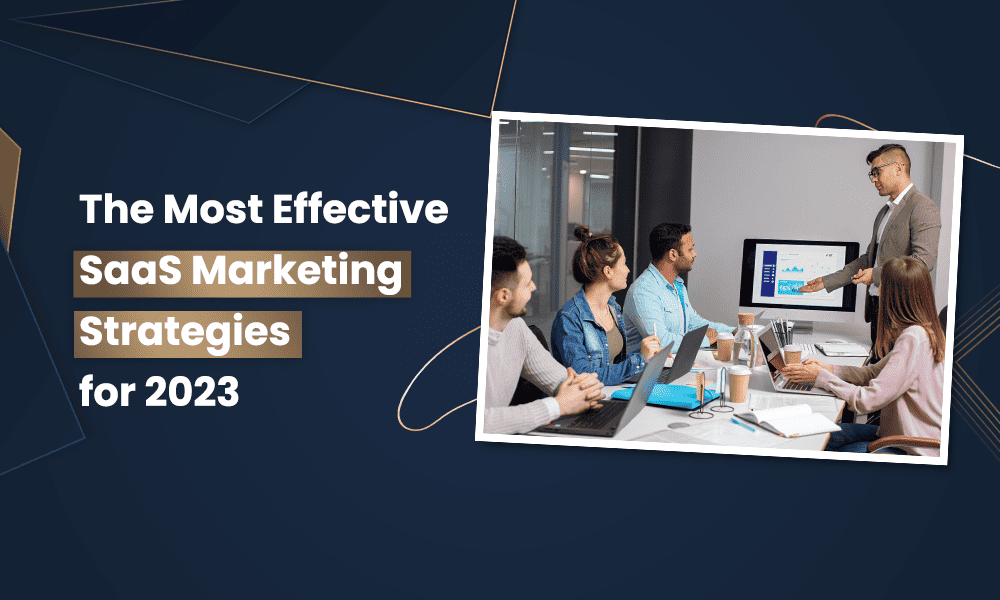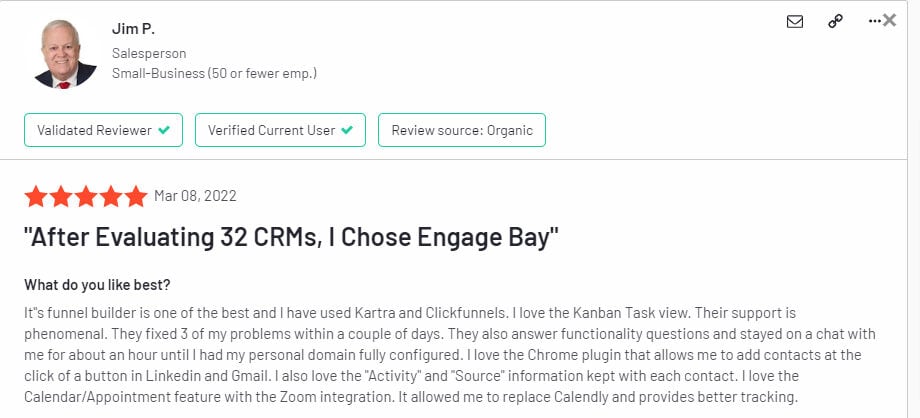Currently, there are about 30,000 SaaS businesses globally. With this increasing number, how do you stay above the competition in the SaaS industry? How can you get your piece of the SaaS industry pie without breaking the bank?
It is worth noting that effective SaaS marketing strategies are constantly evolving. To get your market share, you must continuously weed out what no longer works and refine and reuse what works.
In this blog post, we’ve curated proven SaaS marketing strategies that will be effective in 2023.
These marketing strategies, if implemented, can set your SaaS revenue ballooning whether you’re a SaaS startup, a small SaaS company, or a mid-sized SaaS business.
Table of Contents
A SaaS Marketing Checklist for Good Sense
Before we look at the marketing strategies you can implement for your SaaS business success, there are three basic things worth considering and putting in place first to get the best results from your marketing efforts.
✅ Define your budget well
Some marketing strategies are more costly to implement than others.
For example, data from WebFX shows that, on average, mid-sized businesses spend between $10,000 and $500,000, while small businesses spend $1,000-$10,000 per month on PPC advertising.
This makes PPC advertising a high-budget marketing strategy. Therefore, it may not be a perfect fit if your SaaS business runs on a marketing budget less than the average PPC ad spend.
✅ Beef up the Unique Selling Point (USP) of your SaaS
With a plethora of SaaS products out there, understanding your unique selling point (or proposition) is crucial for success.
Understanding your USP helps position your SaaS business well and sets you apart from the crowd.
It also helps your SaaS marketing team craft unique, clear, and crisp messages that resonate with your target audience’s pain points across your SaaS marketing touchpoints, which makes your SaaS product marketing efforts more effective.
To come up with your SaaS USP, you need to know the following:
- What your SaaS product does best
- The specific problems your SaaS product solves
- What your customers want
- Your value proposition
- What does the competitor’s SaaS product lack?
With the information you’ve garnered from answering the questions above, it’s time to craft your USP and stand out.
✅ Refine your SaaS marketing funnel
Pouring water into a basket and expecting it to get filled up can be very draining and typically yields no results. Similarly, implementing a new SaaS marketing plan without critically analyzing and fixing the loopholes in your marketing funnel could be ineffective.
For maximal results, it’s best to run a background check on your existing marketing funnel, critically analyze it, and fix any existing loopholes.
For example, generating new traffic to your website is counterproductive without optimizing your landing page for better conversions.
Identifying and fixing the loopholes in your marketing funnel can save your B2B marketing team precious time and money.
Read also: 6 High-Impact eCommerce Marketing Strategies to Try Now
Proven SaaS Marketing Strategies Worth Implementing in 2023
Now, let’s talk about some of the most effective SaaS marketing strategies that work.
1. Invest in pay-per-click advertising for your SaaS brand

PPC (pay-per-click) advertising is a highly effective way to market your SaaS product. One out of every three buyers clicks on PPC ads because they answer their search query fast.
When you use PPC to market your SaaS product, you can target potential customers with ad platforms like Google Ads tailored to their interests. With this, you can reach a larger audience than you would otherwise be able to, leading to increased conversion rates and business success.
Ads that are targeted this way are known as “customer-centric ads.” The ad appeals to the customer’s specific needs and interests.
According to data from Wordlead, PPC has a 200% ROI. That is a $2 return for every $1 spent. Also, PPC traffic is 50% more likely to convert than organic traffic.
In addition, PPC ads are often seen as more reputable than other forms of online advertising, which can boost your business in the eyes of potential customers. However, you need a high marketing budget to invest in PPC advertising.
PPC ads cost $2.59 per click and $3.12 per 1,000 impressions, according to reports from WebFX, summing up to $10,000-$500,000. Therefore, PPC advertising may only be a perfect fit for startups with adequate funding.
Read also: SaaS Business Model Working Explained
2. Gate your SaaS demo video
Now, this may sound counterintuitive, but it isn’t. Limiting the access of your demo video to only visitors willing to give access to their contact details is a great way to turn visitors into qualified leads. And, this can significantly shorten the length of your sales cycle.
Ideally, suppose a visitor has enough interest to watch your demo video and goes the extra mile to give their contact information in exchange. In that case, chances are excellent that they’ll convert to paying clients with the proper marketing messaging and nurturing.
Generally, a demo video is an integral part of your SaaS business. It is a great marketing tool to show potential customers what your SaaS product or service can do. By highlighting your SaaS product’s unique features, prospective customers can see how it can benefit them and how they can use it.
When you gate your demo video, you increase its effectiveness in attracting qualified leads. Overall, gating your demo video is an effective marketing strategy if you’re a startup or small business seeking to attract more qualified leads cost-efficiently.
Need help creating your SaaS demo video without breaking the bank? This video is a good place to start.
3. Build and distribute conversion-driven case studies
Case studies should be an essential part of your content marketing strategy. They can help prove your SaaS product’s effectiveness to potential customers.
By using case studies, businesses can demonstrate how their product or service has benefited specific groups of people. This can convince potential customers that your SaaS product is worth using. A survey by Uplift Content shows that case studies are very effective in boosting sales for SaaS companies.
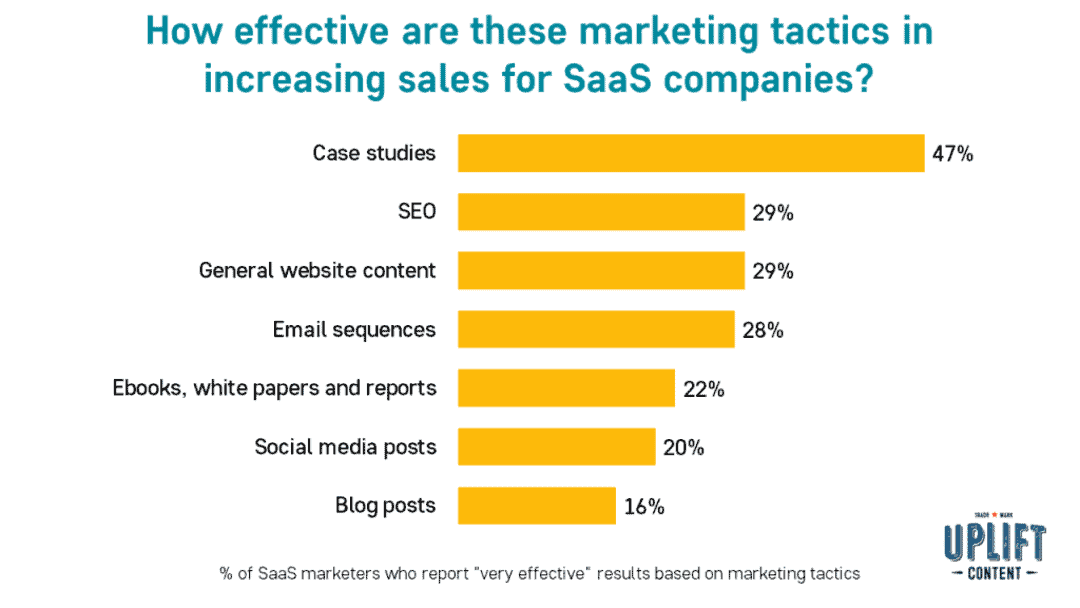
Case studies can also help to build brand awareness and trust. By demonstrating the benefits of a product or service, businesses can create a loyal customer base willing to recommend their product or service to others.
Here’s a great example; a Coca-Cola case study by Voices.com led to a 25% revenue increase year-over-year.
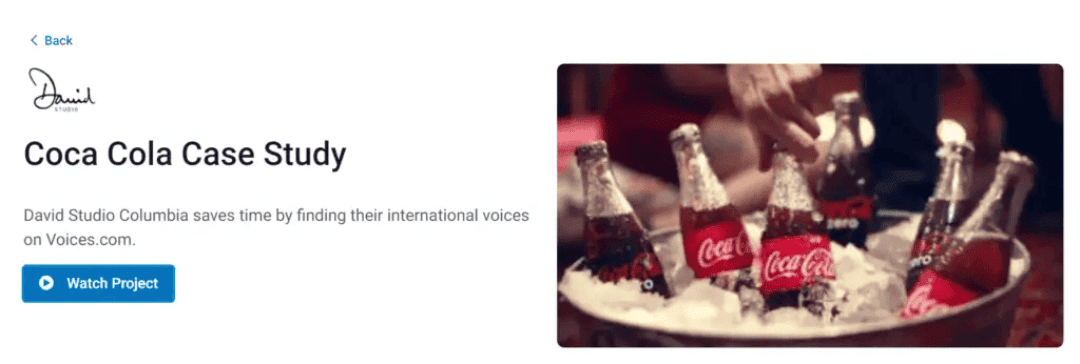
Read also: How to Master Modern Marketing Strategy Like Netflix
4. Invest time in your site’s SEO strategy
Search Engine Optimization (SEO) is making your website as search engine-friendly as possible to increase your site’s visibility and traffic. SEO is an effective SaaS marketing strategy as it helps grow traffic organically and generate leads for your SaaS business.
Reports show that SEO is critical to attracting new SaaS customers – with over 75% of SaaS organic traffic generated through SEO. The goal of SaaS SEO is simple: to appear on Google search’s first page. Better still, to get into the top five spots on the SERP.
To achieve this goal, there are some easy things you can do.
First, understand your ideal customers and ensure you use the right keywords in your content. Using the right keywords will help improve your ranking on search engines, increasing your website’s traffic and leads.
Second, link building is an essential aspect of SEO. You must ensure your site has high-quality links from reputable sources so your traffic will be from legitimate sources.
This will help to increase your site’s credibility and trustworthiness and eventually increase your site ranking. To make the job easier, you can look for SaaS link building agencies, it can be a more cost-effective option than building an in-house link building team.
In addition, on-page optimization is an essential technique for effective SEO. It includes practices like developing high-quality content that meets users’ intent, ensuring your site is mobile-friendly, using compelling titles and meta tags, and adding alt text to images.
This will help improve your site’s ranking in search engines and attract more visitors looking for your targeted keywords.
Finally, keep your website updated with the latest changes in search engine algorithms. This will ensure that more people find your site and are more likely to convert into customers or qualified leads.
Below is a checklist by Semrush to further help you nail your SEO game.
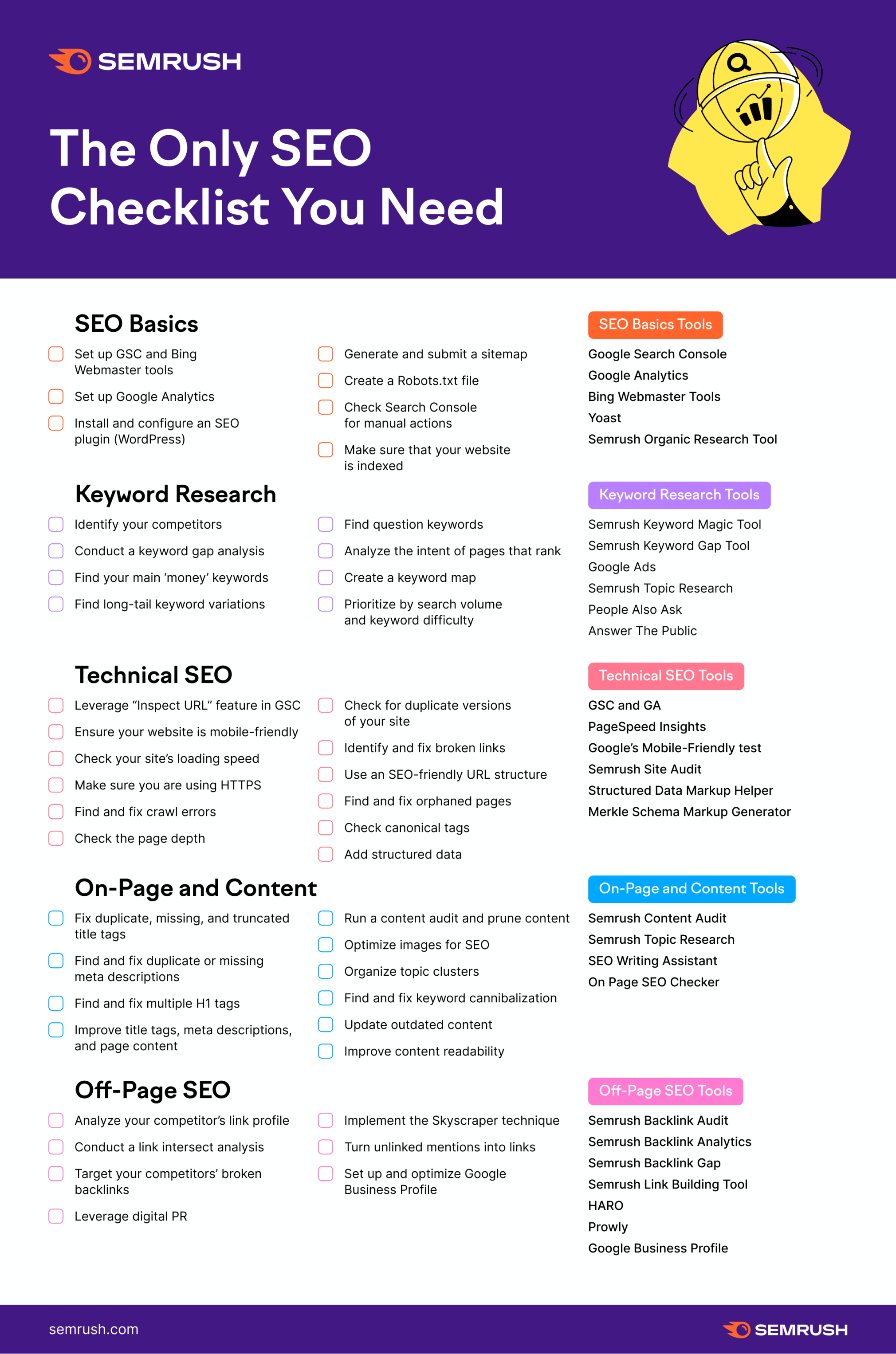
5. Understand (deeply) how your SaaS compares with competitors
A practical way to discover how your product compares with competitors is by checking reviews and alternative blog posts for your SaaS product.
Enter your SaaS product name on a search engine to get started, then type in “alternatives” [SaaS product name + alternatives].
For example, searching for HubSpot alternatives on Google Search, here’s what pops up:
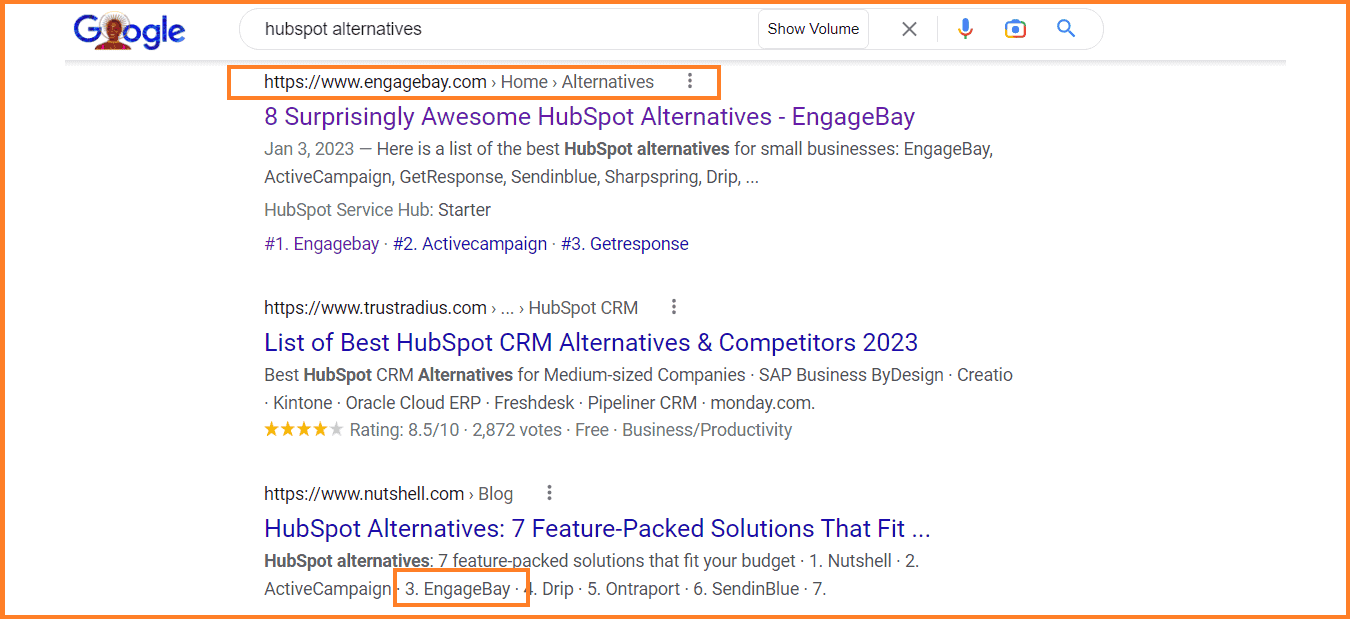
This is because EngageBay is built as a cost-effective solution, and plenty of HubSpot users find it great value for money (reviews here). Next is to check out the reviews, pricing structure, what customers say, and other information you can garner from the available comparison posts.
Observe and take note of the unique features you like about your competitors’ SaaS tools, what makes them stand out in the market, and find ways to improve them. Finally, own the show by curating alternative posts for your products.
In your comparison posts, state what your competitor’s SaaS tools have to offer and prove why yours is the better alternative.
Comparison posts are highly effective because searchers who engage on such posts have a high-purchase intent and are thus more likely to buy, and can be done by any SaaS business regardless of your marketing budget.
Any successful SaaS marketing strategy will include competitor analysis in its plan.
Read also: SaaS Marketing Automation Explained (+ Top 5 Tools to Consider)
6. Host webinars that address your SaaS customer pain points
Running pain point webinars for your SaaS business can effectively market your business, attract qualified leads, and increase customer engagement.
As per a Demio case study, 78 of the top 100 SaaS companies nominated by Forbes (the Cloud 100) run webinars and have an effective webinar strategy.
92.31% of these companies use the recordings from the webinars as lead magnets, thereby building their content assets and increasing their brand online reach.
To get started on your webinar:
- Choose a relevant topic. Choosing a topic that addresses your SaaS customers’ pain points and can drive further engagement is best.
- Decide on a hosting platform. You can choose from several webinar hosting platforms, such as Livestorm or GoTo Webinar, to host your webinar.
- Plan for audience engagement. One of the critical goals of pain point webinars is to engage with your audience and build relationships. This can be done by providing valuable content, responding to audience questions, and providing feedback after the webinar.
- Use social media platforms to promote your webinar. Use social media platforms like Facebook and Twitter to promote your webinar and increase audience engagement.
- Follow up after the webinar. Make sure to follow up with your audience after the webinar to thank them for attending and then provide them with additional information related to the webinar topic.
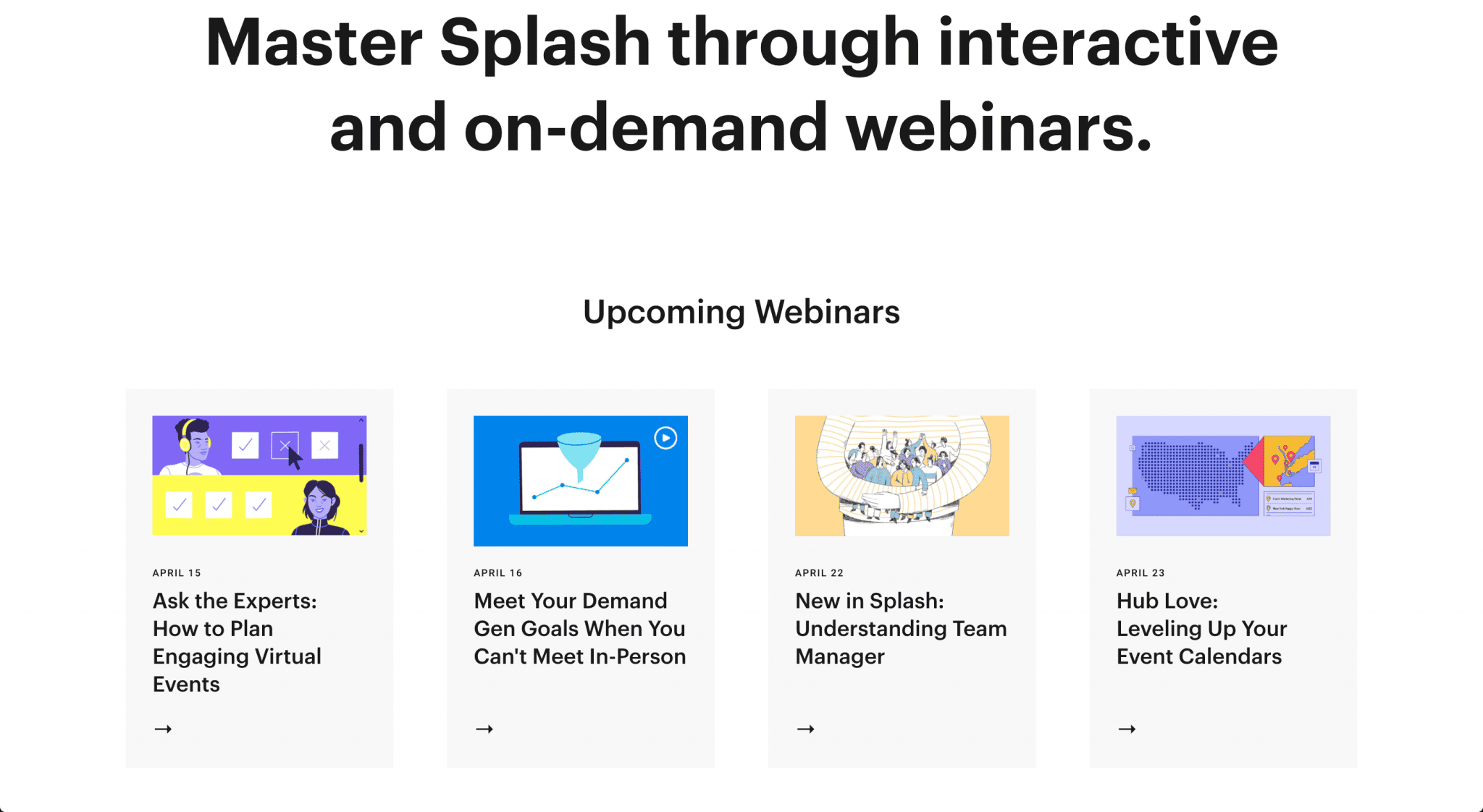
7. Find ways to get more traffic to your website
Site traffic is the number of people who visit your website. By generating more site traffic, you can increase your website’s visibility and improve your chances of converting prospects into loyal customers. There are two major categories of site traffic: organic traffic and paid traffic.
In organic traffic, visitors come to your site from search engines. In contrast, for paid traffic, visitors get to your site through ad campaigns. According to research, 53.3% of website traffic is organic.
You can decide to go for either or both (paid traffic or organic traffic), depending on your budget and your overall SaaS content marketing strategy. Typically, organic traffic is a long-term investment that pays the best dividend (if you can wait it out). But if you want immediate results, go for paid traffic.
Read also: How to Get Started in Freelance Digital Marketing [Guide]
8. Review your buyer persona
Creating a buyer persona is crucial for your SaaS business’s success. It helps you understand your customers’ needs and how best to provide them with your product or service.
Reports from the ITSMA study reveal that businesses that use buyers’ personas acquire more high-quality leads(56%) and reduce their sales cycle by 36%. Further studies also show that companies who surpass their revenue targets were 7x more likely to review and maintain their customers’ buyer personas.
Finally, a case study by MarketingSherpa revealed that implementing buyer personas increases business revenue by 171% and site visits by 100%.
You can review your buyer persona by analyzing your customer’s buying behavior using a CRM analytics tool. Get insight into their buying history, demographics, and repeat purchase rates. Another option would be interviewing your customers, looking for repeat patterns, and developing an ideal customer profile (ICP).
Understanding your buyer persona can improve your sales process and your customer satisfaction levels, too.
Read also: Discover the Top 26 Small Business Ideas for 2023: Your Road to Success
9. Get your clients to guest post for you
Guest posting is a form of user-generated content. It is a popular way to generate referral traffic, build quality backlinks, and reach new potential customers. Getting your clients to write for you is a win-win situation for your SaaS business and your clients.
It’s an excellent channel for your clients to get in front of a wider audience and demonstrate their expertise on the subject matter. It’s also a great way to get relevant SaaS content and build online authority for your SaaS business.
Read also: 10 Content Marketing Tips To Make Your Day
10. Establish a clear pricing structure
Every SaaS business needs a transparent pricing structure that customers can easily understand. Establishing a clear pricing structure for your SaaS business is essential for attracting and retaining new SaaS customers.
Creating a transparent pricing structure for your SaaS business requires careful consideration of your customer’s needs and the value your SaaS product offers. Your SaaS customers should be able to understand your pricing structure quickly and easily.
The first step in setting up a pricing structure is determining what features customers need. This can be done by conducting market research or customer surveys to determine the most desirable features.
Once the features are identified, determine the cost. This will help you set a price point that is attractive to customers and profitable for your SaaS business.
Ideally, your SaaS pricing plan should include different features and pricing tiers so customers can choose the plan that best meets their needs at the price they can afford. The pricing structure should also be flexible and allow your SaaS customers to upgrade or downgrade their plans if their needs change.
Finally, provide your customers with a clear understanding of the terms and conditions of the pricing plan, such as cancellation fees or additional fees. Providing your SaaS customers with this information will help your business establish a strong relationship with its customers and build customer loyalty.
You can draw inspiration from this example of a transparent pricing structure 👇🏻
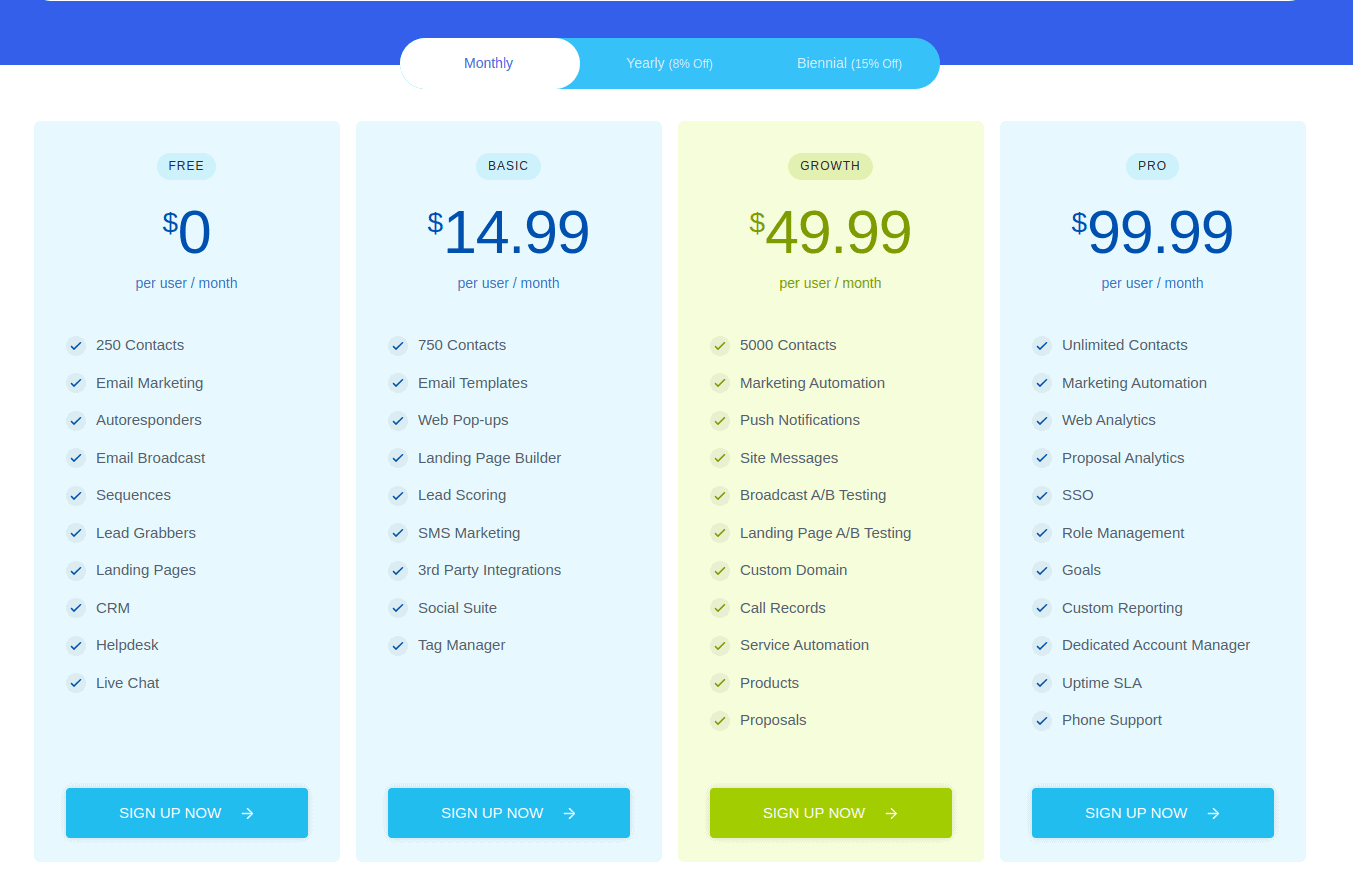
11. Improve your SaaS product user’s experience
User experience (UX) is one of the most important aspects of any SaaS product. It’s essential that users feel comfortable using your product and have the best possible experience when interacting with your brand. That’s why investing in user experience design (UED) is crucial – creating a user interface that is easy to use and helps users achieve their objectives.
One of the best ways to improve user experience is to ensure that your branding is consistent and effective across all your SaaS products. This means designing your user interface to look and feel the same wherever users interact with your brand – on your website, app, or social media.
By investing in user experience design, you can ensure that your users have a positive experience throughout their customer journey and that they will return to your SaaS product.
Another way to improve user experience is by designating a UX specialist responsible for creating user flows, designing user interface elements, and creating user interface Mockups for your SaaS tool. This will help to ensure that the brand’s interactions with users are optimal and consistent across all platforms and devices.
Finally, a good user experience isn’t just product-centric. It’s also about improving the quality of your users’ lives each time they interact with your brand–this will surely keep them coming back for more.
Slack is an example of a SaaS brand with a good user experience design.
Read also: The What’s What of Customer Experience Automation
12. Produce and advertise engaging content for the top of your funnel
You’ve probably heard about TOFU, right? Regarding content marketing for SaaS companies, creating and producing useful and attractive content for your target audience is essential. This is especially true for the top of your funnel (TOFU) – where potential customers are first introduced to your product.
According to a report from Semrush, “how to” guides, landing pages, infographics, checklists, and ebooks are the most effective top-of-funnel content to draw traffic to your website from potential customers.
In addition, use social media platforms like Facebook and Twitter to promote and share your content with your target audience. Social media marketing is highly effective at targeting the younger generations, and pairing up with SaaS marketers and influencers can vastly improve reach.
For more top-of-the-funnel content ideas, check out the image below courtesy of Semrush.
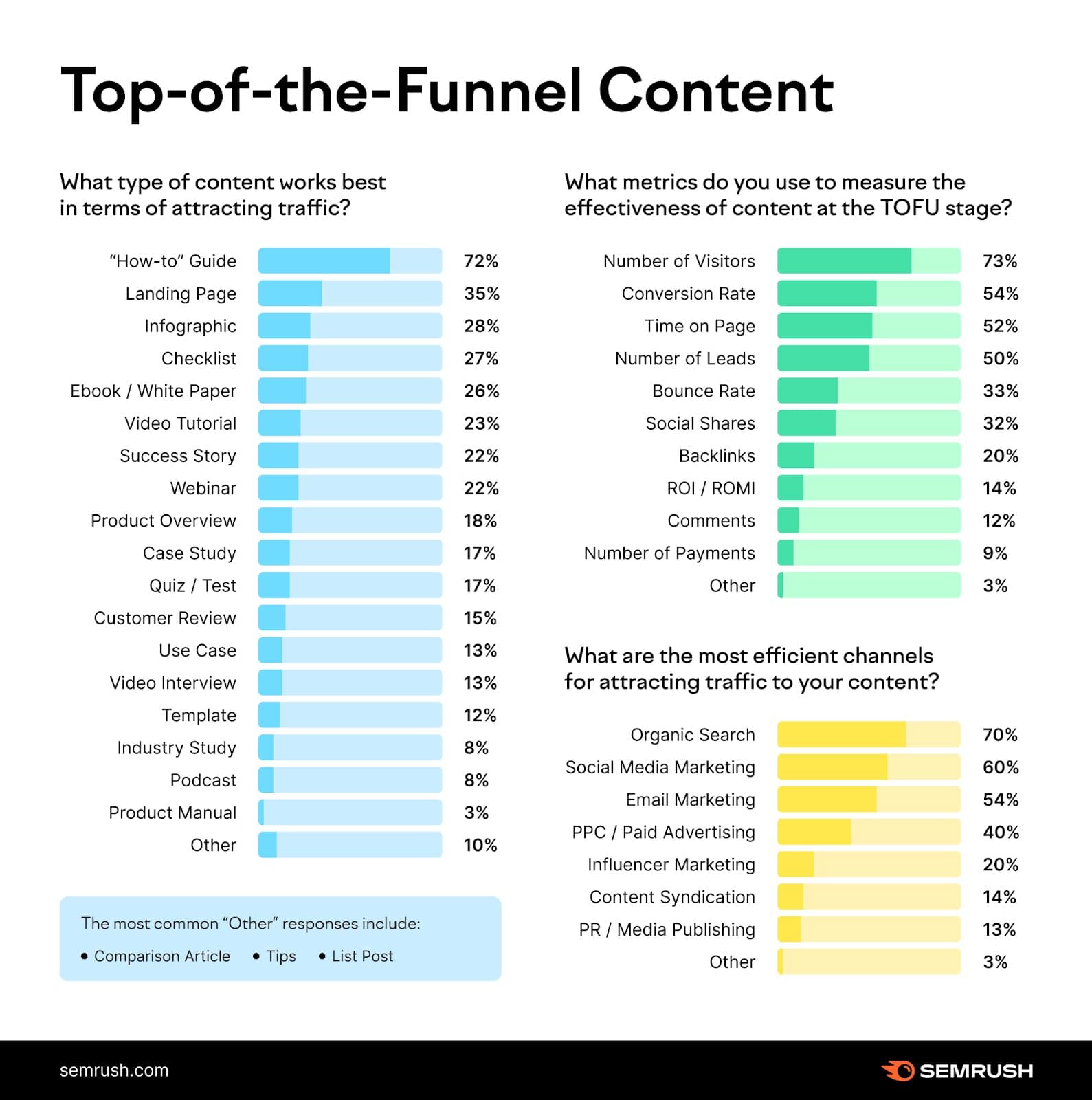
13. Be generous with your reward policy
Everyone loves a well-thought-out reward package. Your SaaS customers aren’t left out. You can build commitment and deepen existing customer relationships by giving out rewards.
Now, the trick is to get everyone involved in your reward package. For example, to mark your SaaS customer’s special dates, such as birthdays or their user anniversary with you, reward them. Especially those who have crossed a significant milestone with your brand or those in active subscriptions.
Hulu is an example of a SaaS brand that is taking its reward policy to a new level by rewarding its eligible customers with a one-month free subscription to mark their birthdays. Take a look at the image below.

Read also: 10 Simple Strategies to Keep Customers Happy
14. Analyze your SaaS customer data
Data is critical to the success of your SaaS business. It’s important to track customer data to improve your customer experience and optimize your SaaS business.
This data includes potential customer demographics and behavioral data, sales analytics, and engagement metrics. By tracking and analyzing customer data, you can better understand how your customers use your product and alter your offerings based on that information.
In addition, tracked data can help you identify trends, track relevant SaaS metrics, and make better decisions to increase your SaaS sales.
Tracking customer data can also help you identify premium customers for personalized messaging. You can easily track your SaaS customers’ data using EngageBay’s excellent CRM analytics.
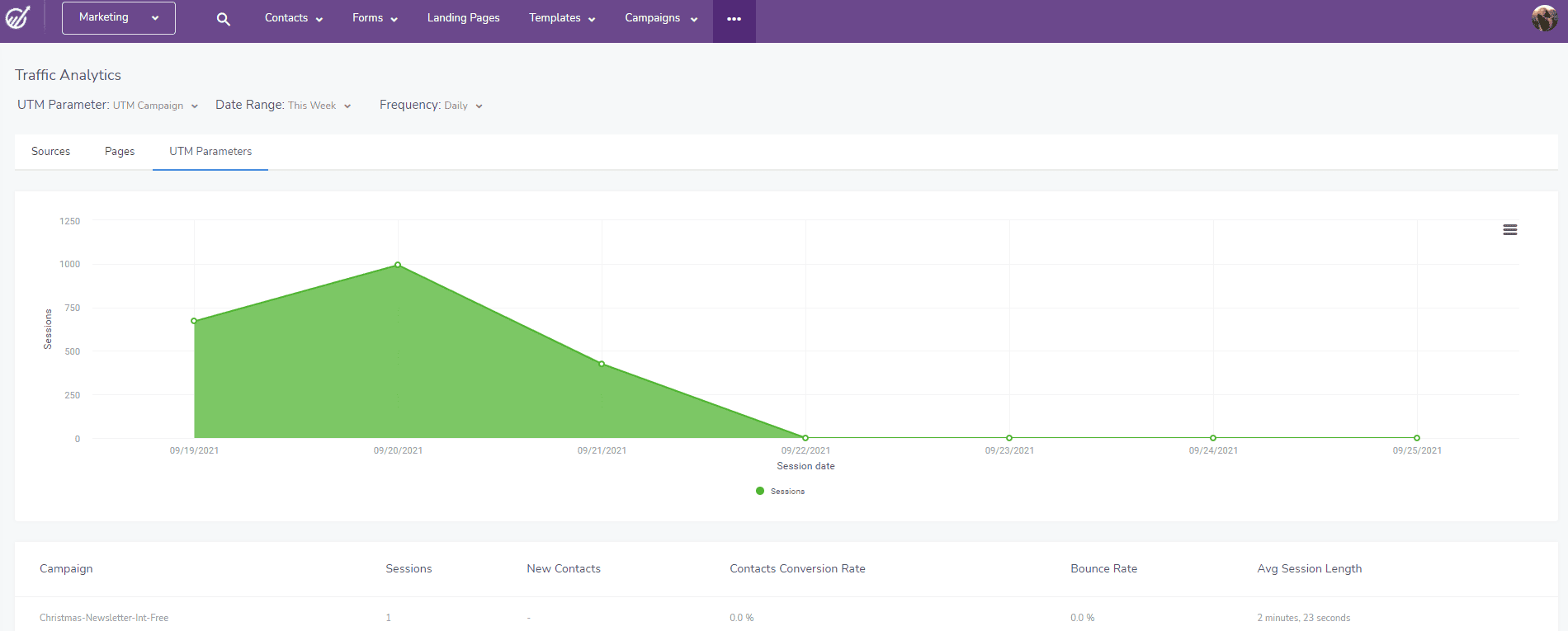
15. Limit the customer’s range of options
Less is more. In the SaaS business landscape, the same rule applies. Here’s a practical reason why: ever tried to subscribe to a product only to get crippled by the broad swath of options thrown in your direction?
Confusion sets in, and you can’t seem to make up your mind on the best option to go for. We all know how that ends (you turn off your device and decide to come back later to make a choice; in reality, you never get back). You do not want that happening with your SaaS customers, do you?
It’s tempting to think you’re doing your customers a favor by providing multiple options, but you’re stretching their purchase journey–if they ever get back. The trick is to keep it simple.
Grammarly is an excellent example of SaaS brands keeping it simple and limiting their customers’ choices positively.
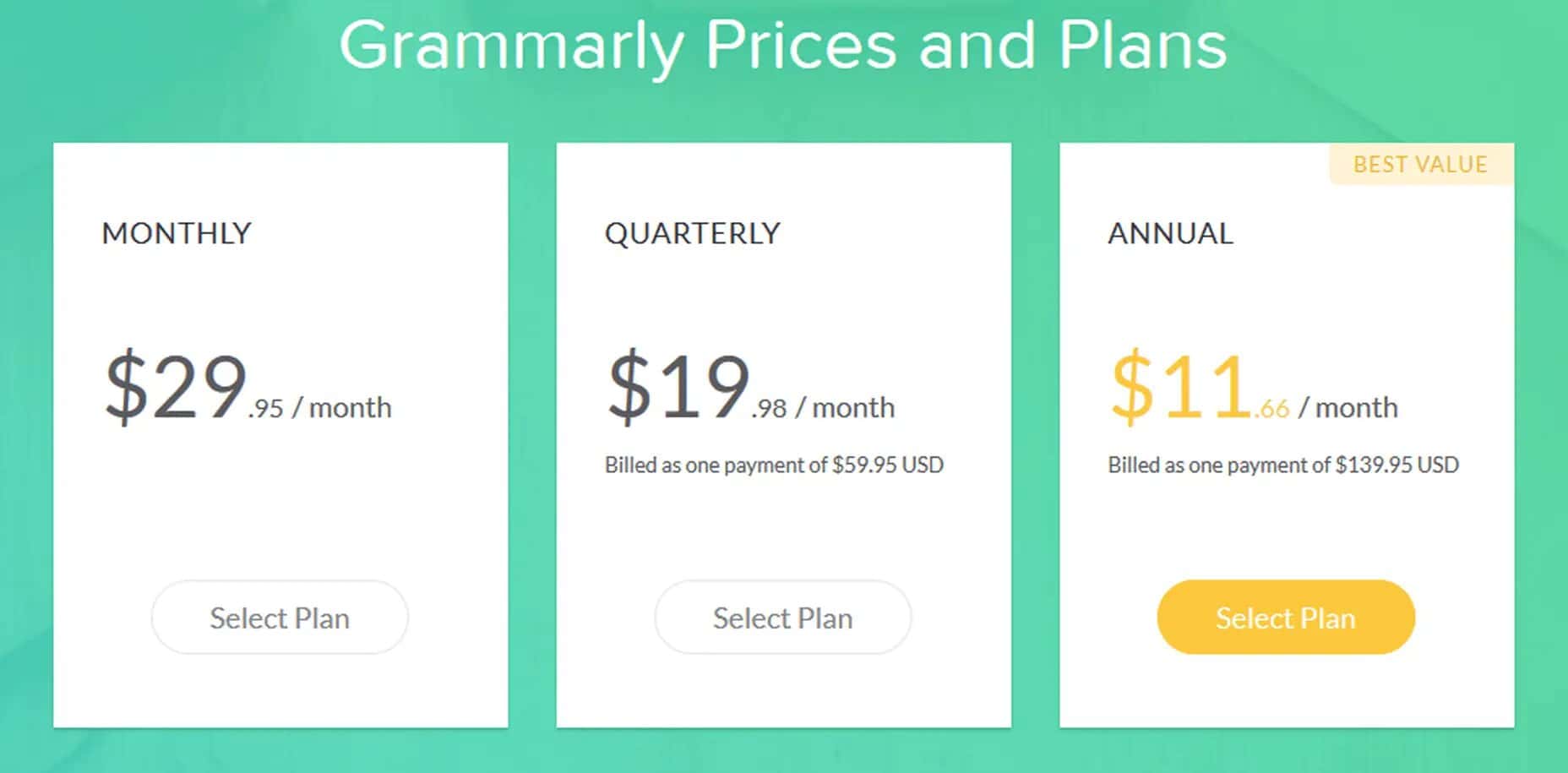
Read also: 4 Easy Steps To Make Your Business More Customer-Oriented
16. Collect and publish customer reviews and success stories
Customer reviews and success stories are crucial to your SaaS business’s success. For example, who would you rather buy from–an online business with over a hundred positive reviews and customer success stories or an online business without reviews? I bet my guess is the same as yours.
According to reports from BigCommerce, 72% of consumers trust a business with positive reviews and testimonials more. You can build credibility for your SaaS product from client testimonials and reviews.
You can encourage customers to give reviews about your SaaS tool by offering rewards or incentives. SurveyMonkey states that you can get the most “difficult audiences” to take your survey with the proper reward.
However, don’t offer incentives to make customers give an untrue review about your product–honesty is the best policy if you want your SaaS company’s success to be long-lasting.
At EngageBay, we’re grateful that our customers share some glowing reviews about their experience using the product, even without us asking them 🙂
17. Collaborate with non-competing SaaS brands
Partnerships are a great way to increase your business’s reach and maximize efforts. By teaming up with other non-competing businesses, you can share resources and develop new partnerships to benefit both companies. Partnerships can help you expand your customer base and grow your revenue in a SaaS business.
A SaaS brand benefiting from the power of collaborations is Netflix.
Netflix collaborated with innovative TV companies like Samsung and Sony to create 4K TVs and high-quality 4K content, which changed how people watched TV–it was a win-win situation for the collaborating brands.
By partnering with other businesses(especially if you are a startup), you can increase your chances of success by a significant margin.
Read also: The 15 Best B2B SaaS Marketing Agencies and Consultants
18. Make your SaaS free trial irresistible
Free trials are an effective way to get your foot in the door with potential SaaS customers. This is crucial for your B2C / B2B SaaS marketing strategy.
According to research by Totango on SaaS business conversion rates, opt-in free trials (no up-front payment information required) had a 10% free trial conversion and an 80% customer retention rate.
Opt-out free trials (up-front payment information required) had a 2% free trial conversion and a 60% customer retention rate. Irrespective of the free trial model you decide on, you can leverage the proven power of free trials to build brand awareness and attract new customers, thereby improving customer acquisition.
When you offer a free trial, you’re telling potential customers that you’re trustworthy and will provide them with value – two things essential for a successful SaaS business.
Spotify is an excellent example of SaaS brands offering irresistible free trials.
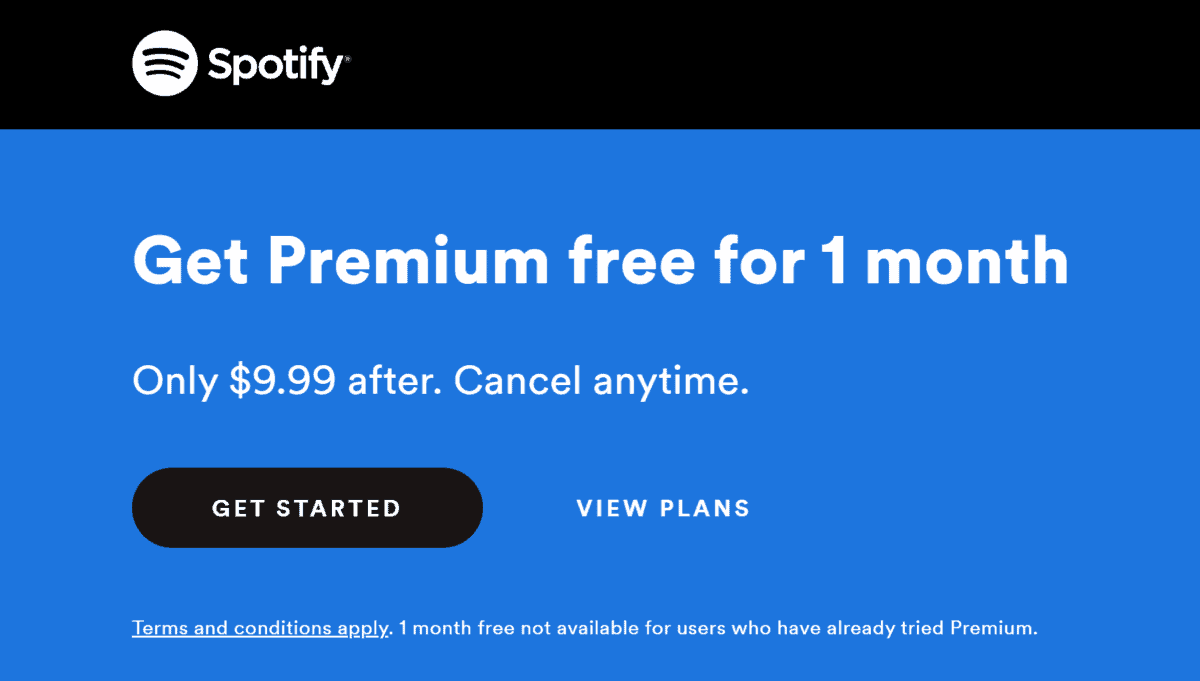
19. Make your demo sign-up as seamless as possible
A seamless demo sign-up can often differentiate between losing a prospect and closing a deal. According to Forrester Research, 11% of people discontinue signing up if the registration process is overly complicated.
A demo is an excellent way to show prospects how your SaaS product works. Making your demo sign-up seamless can significantly improve your SaaS sales. Live demos are the most widely used type of demos (70%) over pre-recorded demos (27%) and real-use demos (3%) because they provide a more interactive and personalized engagement with prospects.
However, irrespective of the type of demo your sales team uses or the amount of effort and time put into curating it. Prospects won’t see it if the sign-up process is difficult or time-consuming.
The Hootsuite demo sign-up page is a great example to draw inspiration (in the image below).
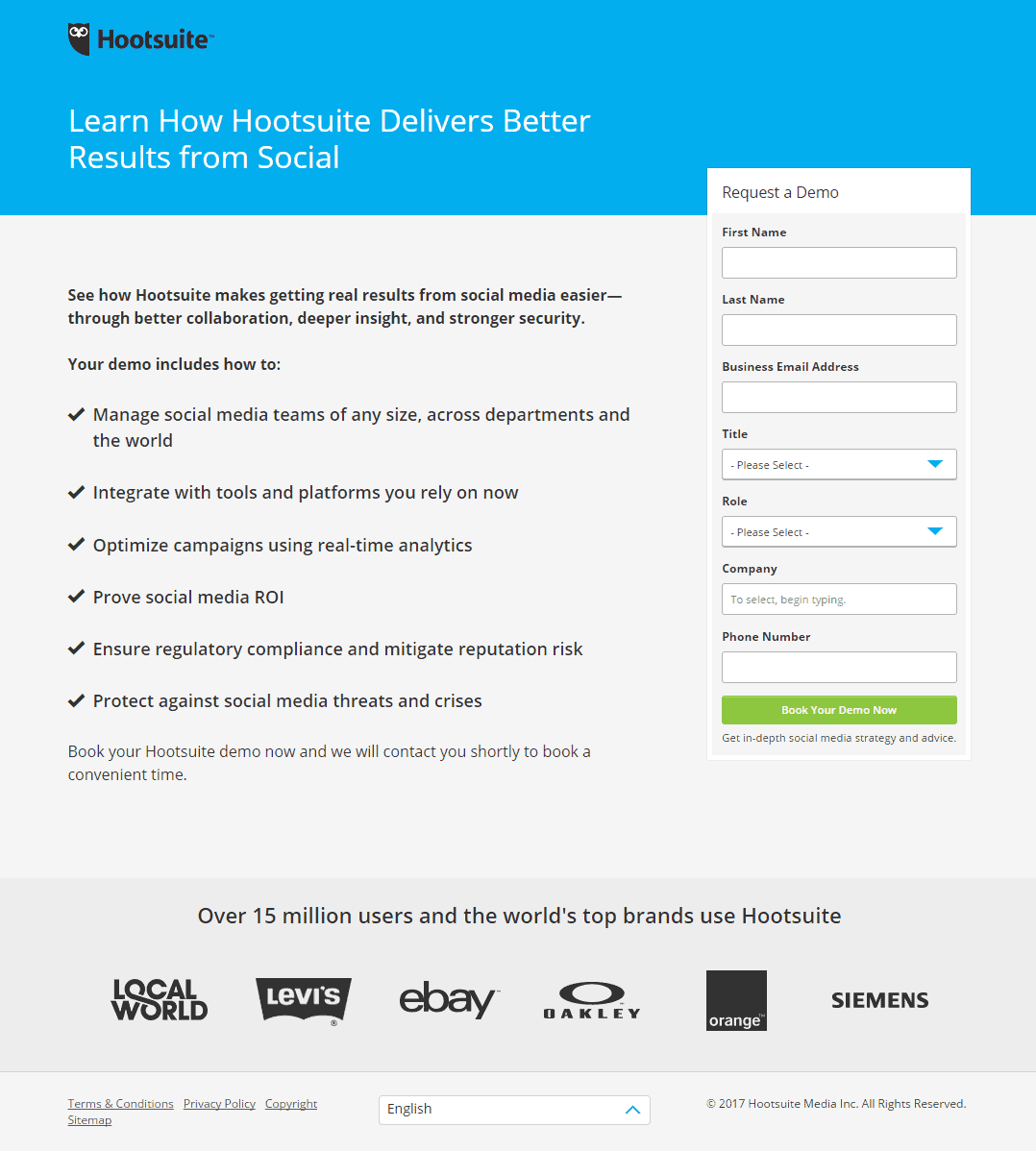
Read also: 10 Reasons Why SaaS Companies Invest in CRM Software
20. Be generous with discounts and incentives
Giving incentives and discounts to your customers is an integral part of your SaaS marketing retention strategy.
By offering incentives and discounts to your customers, you can reduce the number of customers who leave your system, improve your customer engagement rate, and increase the revenue you generate.
One of the best ways to offer incentives and discounts is through a loyalty program. This allows you to track customer behavior and determine which incentives and discounts most effectively retain customers.
For example, you might offer a discount on the next billing cycle for customers who remain loyal for a certain period. You could also offer free features or additional support to active customers. Incentives can also be cumulative, so customers who stay loyal over multiple months or years receive more significant discounts or additional benefits.
👉 Supercharge your business growth with some of the best marketing strategies.
Read also: SaaS Go-To-Market Strategy Framework & Proven Examples
21. Make your referral marketing programs more rewarding
As already established, referral programs are one of the most cost-efficient marketing strategies that work well for SaaS businesses.
Referrals typically yield better conversions. This is because referrals come by word-of-mouth recommendations from satisfied clients who have used your product and loved it.
Here are a few stats that show the effectiveness of referral marketing:
- The chances of consumers buying a new product increase by 77% when referred by a friend or family
- Roughly 50% of customers are more likely to give a referral when offered an incentive
- Referred customers have a 25% higher Lifetime Value and a 37% higher retention rate
- The referral marketing conversion rate is 3-5x higher than other marketing campaign channels
- Referred customers spend 200% more than average customers
That mentioned, to get more from your referral marketing program, add a booster pack–make the incentives more mouth-watering.
For example, suppose your loyalty program already offers free access to your SaaS product’s basic plan for a month. In that case, you can include an exclusive package or a free upgraded monthly subscription.
It may seem like you are giving out a lot of freebies, but as James Cash Penney (Founder of J. C. Penney stores) puts it:
“The well-satisfied customer will bring the repeat sale that counts.”
It’s time to make your loyalty program work for you.
Read also: 31 SaaS Affiliate Programs for a Great Side Hustle
Wrapping Up
You must have seen that there are many moving pieces when it comes to SaaS marketing. This can be overwhelming.
However, the proven SaaS marketing strategies listed in this blog post are a great place to begin your SaaS marketing efforts, whether you’re a start-up, small, or mid-sized business in 2023.
Feel free to pick a few or try out several of them, but first, ensure you define your budget, define your SaaS business’s unique selling point, and refine your marketing funnel to get the best results for your marketing efforts.
For your CRM analytics, marketing automation, and sales dashboards, try EngageBay.

